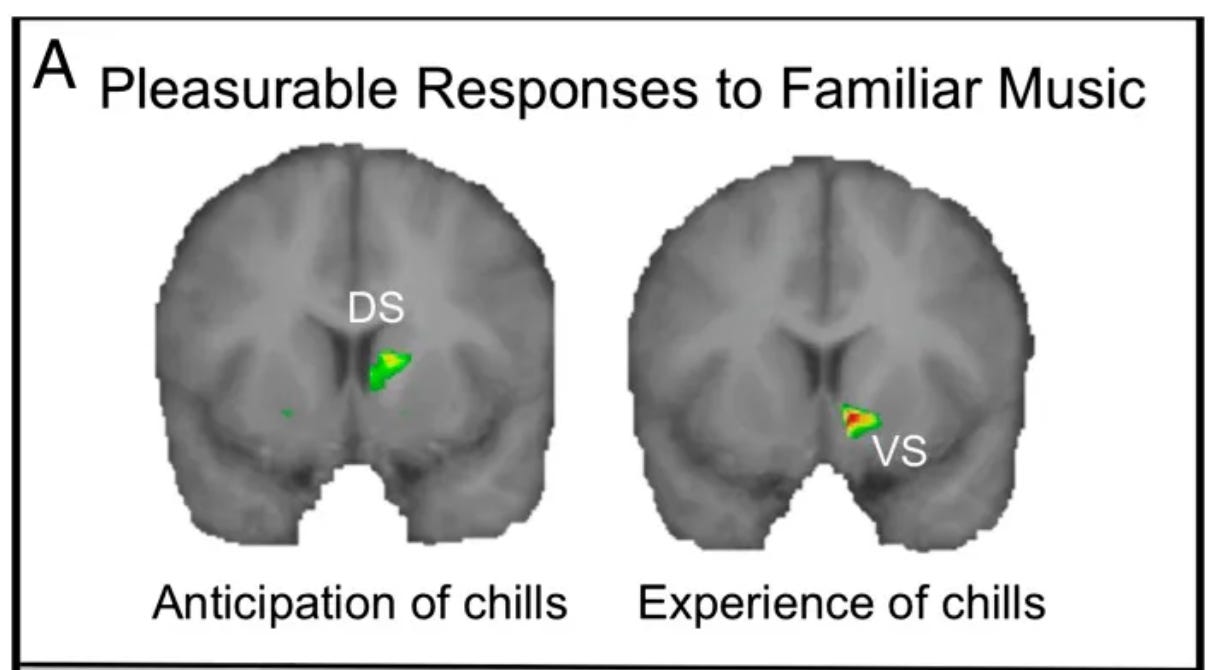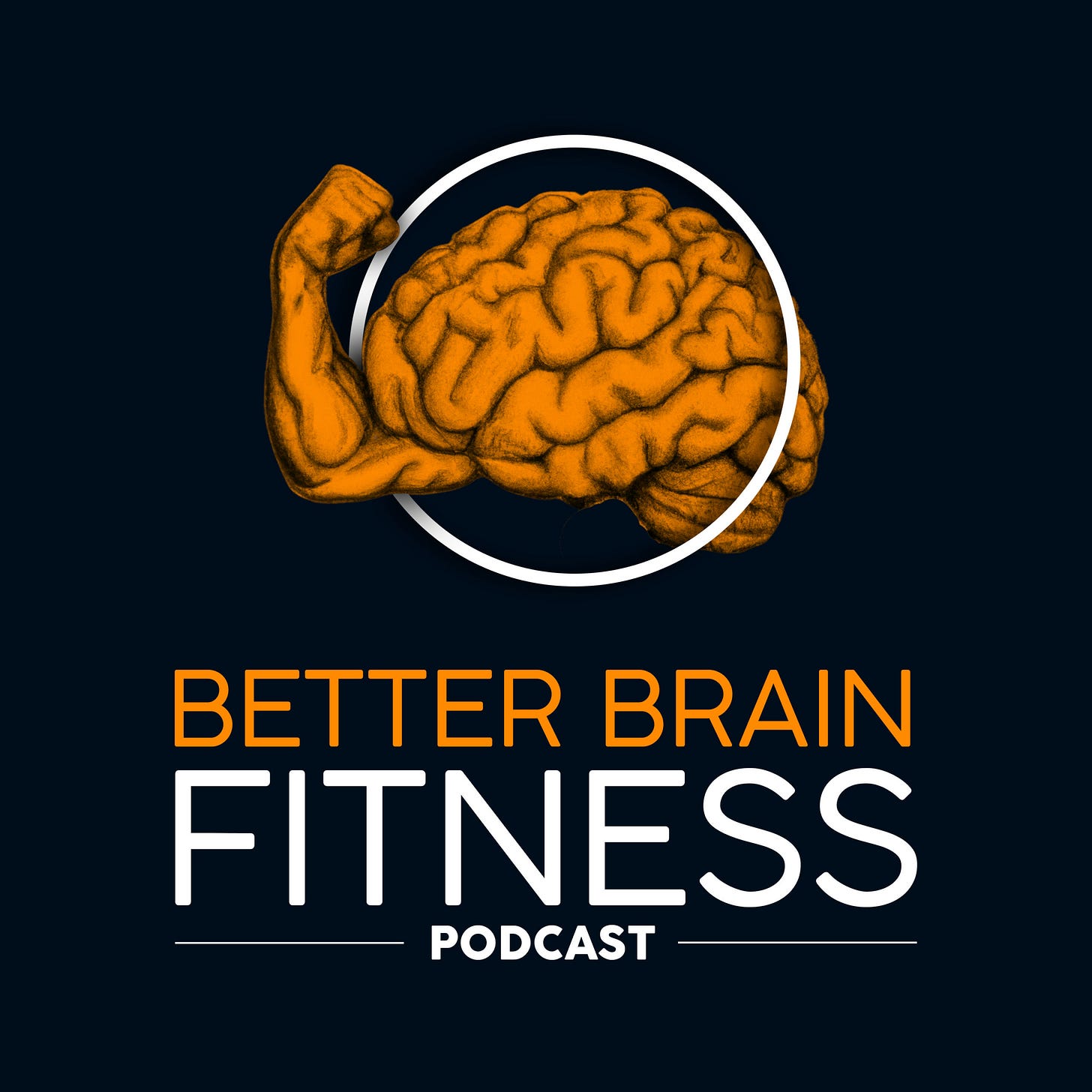Unraveling the Mystery of Music
Examining the deep connection between music and the brain.
"As neither the enjoyment nor the capacity of producing musical notes are faculties of the least use to man in reference to his daily habits of life, they must be ranked amongst the most mysterious with which he is endowed."
- Charles Darwin
A bite of steak.
The warmth of a blanket.
A friendly smile.
These are all things that we find pleasurable. Every stimulus we encounter, including the aforementioned pleasure-producing items, generates a unique pattern of brain activation in the sensory cortex that processes it (gustatory cortex for the steak, visual cortex for the smile, somatosensory cortex for the blanket). If that pattern of activity was elicited by something that promotes our survival, then the pattern activates our reward circuits, leading to our subjective experience of pleasure.
In these instances, it’s not these unique patterns of brain activity itself that our brain is rewarding us for, but rather what those patterns represent. A steak providing nourishment. A blanket providing warmth. A smile indicating we have an ally in this world.
But there’s one notable exception: the pleasure we get from music.
Here’s an MRI from someone listening to music and experiencing “chills,” considered the most intense form of pleasure. The areas of increased activation both in anticipation of and during the experience of chills are part of the brain’s reward circuitry. If we zoomed into the neuronal level, we’d see synapses flooded with dopamine.

Our brain rewards us for listening to music.
And yet, unlike virtually every other natural stimulus we find rewarding, the pattern elicited by music doesn’t represent anything out in the world.
When our brain hears music, it says “yes, please give me more!” But why?
The ubiquity of music in human societies indicates that this isn’t the product of some kind of cultural conditioning, but is instead related to something deeply fundamental about the human brain. It is also a uniquely human phenomenon - our closest primate relatives display neither the affinity for music nor have the neural substrates to decode its high level features.
As evidenced from the opening quote, Darwin was aware of the peculiar mystery of music, and was at a loss as to how to explain it.
The fact that listening to music is universally pleasurable strongly suggests it has survival value. But how?
Activity Patterns
If you could define the brain’s core capability as concisely as possible, it would be this: pattern detection.
All of your brain’s perceptual, conceptual, and motor capabilities ultimately are a direct product of its ability to identify complex, high-level patterns (or “regularities”) in the information that it processes. This is true throughout the cortex. The central difference between the different regions of the brain is in the types of information it processes (visual, auditory, etc.) and the kinds of patterns it has been trained to identify.
And if you could define music as concisely as possible, it would be this: patterned sound.
Music enters our brain as vibrations of air hitting up against our eardrum. Inside those vibrations are patterns upon patterns upon patterns, such as:
Harmonic patterns: different musical notes vibrate at different frequencies. When the frequency of those vibrations can be related by simple whole-number ratios, we find them pleasing. Our ability to hear and appreciate all of the different kinds of harmonies resides in our brain’s ability to identify the mathematical relationships between groups of notes.
Melodic patterns: recurring sequences of notes or intervals that form recognizable musical units of varying length.
Rhythmic patterns: various elements like beat structure (recurring beats of 2, 3, 4, etc.), meter (specific emphasis on certain beats), and patterns of sound and silence in the phrases of the melody are all various elements that comprise the rhythm of music.
Structural patterns - Established sets of melodic, rhythmic, and harmonic patterns themselves can be combined into larger structural patterns of various kinds (the verse, chorus, bridge structure common to popular music, for example).
Suffice to say, all of these patterns keep our brain quite busy. Functional imaging studies performed while people listen to music not only demonstrate activity throughout auditory cortex, as expected, but in cortical networks distributed throughout the brain. And, because of the fleeting nature of music, many of these pieces of sonic information must be held in working memory in order for these longer-evolving patterns to be discovered. In the words of those who research it, listening to music “lights up the whole brain.”
Furthermore, while listening to music, your brain is not only finding patterns, but using its prior knowledge to make predictions about which pattern is coming next. The primary benefit of our wondrous pattern detection system is that it helps us predict the future.
In other words, if you wanted to design a workout to exercise the core capability that powers all of human cognition, you’d be hard pressed to find a better activity than music.
As mentioned, music has been shown to be one of the most intensely rewarding stimuli that we process. And the research here has shown that it is specifically when we recognize patterns in music and when we make successful predictions about it that our brain’s reward circuits turn on.
So, thanks to the many technological advances that have been made since Darwin’s time, we now have a very plausible solution to the music mystery that confounded him.
In the case of the the steak, the blanket, our brain is rewarding us for what the brain activity they generate represent.
In the case of music, our brain is rewarding us for the brain activity itself.
Listening to music (and performing it) is the original brain exercise, and one we’ve been performing for tens of thousands of years.
Precision Stimulation
As I’m sure you are aware, different kinds of music can impact us in very different ways. That’s because different kinds of music can impact our brain in very different ways. And we can tailor the features in music to heighten certain beneficial effects.
The truth is, we’ve been doing exactly this for tens of thousands of years, including in the healing arts. In essence, because our appreciation of music lies in how it directly impacts our brain, our music-making history is the story of us figuring how to massage its details to achieve different patterns of stimulation and experiences.
In other words, music can be designed to activate specific parts of the brain, just as we might do with a surgically implanted device (minus the cost and the opening of the skull).
For a compelling illustration of the impact of music on the brain, watch these two clips of a patient with Parkinson’s disease working with a physical therapist.
In this first clip, he is walking as he normally does, with the characteristic rigid posture and shuffling gait that are hallmarks of the condition, relying on the walker to maintain balance.
Then, the music is turned on. Now look at the dramatic change in his gait.
His feet no longer shuffle, and his balance and posture are markedly improved (rather than using it for support, he’s basically carrying the walker now).
How is this possible? Because music is activating parts of his brain that he can no longer activate on his own, as powerfully and effectively as an electrode meticulously planted into his brain.
Introducing Neurotrophia
Clearly, I think the value of music for our brain remains vastly under-explored. It’s a recurring story - in our endless quest for the next new thing, we often fail to fully explore the potential of what we already have.
As you know, the courses of musical instruction at the Brainjo Academy are to help people reap the brain benefits of learning to play a musical instrument.
Recently, I launched a new musical project here at Brainjo Studios. It’s called Neurotrophia, and it’s all about exploring and exploiting the many benefits of listening to music.
The first composition is an arrangement of The Mandalorian Theme, which has been customized for global cognitive stimulation, or its value as cognitive “exercise” (listening with headphones or earbuds is recommended).
Click here to learn more about the mission of Neurotrophia and the types of music.
Brain Boosting Resources
In this section, I’ll provide some of my favorite recommended resources for improving brain health and function (I don’t receive anything for these recommendations, I just share what I like).
Product Recommendation: Noise Cancelling Headphones
As mentioned above, headphones are recommended for listening to the Neurotrophia track. That’s because being able to present different sounds to each ear allows for their initial processing to be done in the opposite hemisphere, increasing the amount of stimulation. Adding noise cancellation also really helps for focusing intently on what you’re listening to (and is especially helpful on an airplane flight).
I’ve had a pair of Bose Quiet Comfort wireless noise cancelling headphones for several years now, and they are one of my prized possessions. I use them just about every day, and if I lost them I’d replace them in a heartbeat.
For a less expensive option, the “Soundcore” headphones by Anker Space are well reviewed.
This Week On The Better Brain Fitness Podcast: How do you promote healthy sleep?
Better Brain Fitness podcast listener Martin has noticed that his sleep has become more fragmented with age.
Recognizing the importance of sleep for learning, memory, brain repair and recovery, he wonders what sorts of things he can do to promote healthy sleep.
That’s the question we address on this week’s episode, with help from our special guest Dr. Dan Pardi.
The humanOS Newsletter: Do video games boost brainpower?
Could video games actually be good for your brainpower?
The impact of playing video games on the mind has been a controversial subject for decades. Some studies suggest potential harm, but many others have shown benefit.
The key may lie in the type of video game that you choose to play — and the kind of stimulation that it provides.
Click here to learn more about the research on video games and cognitive function in the latest issue of the humanOS newsletter.
That’s all for this issue. Thanks for reading all the way to the end!
Josh






I have a friend that sees color listening / playing music. She plays piano. Her mother plays violin, her aunt plays piano. her father was a jazz producer for Columbia Records. She said she actually sees particular colors for different sounds. I don't, maybe this is why I struggle to learn the banjo. I am a academy member. Thanks for the interesting BRAIN and banjo videos
I expect many people will think of what I thought of. Music is, above all things, communication. If the most intense speech you can imagine reaches a level of 10, music's peak would be around 100. Rhythm patterns: does anyone dance to people talking? Melody patterns: some languages have melodies that almost make one want to dance, but we can dance for hours to the right music. Structural patterns: sometimes a little spark happens in the mind when someone says something (say, a dear friend saying "y'all" in their particular way), but five alarm fires can break out when your favorite band ever is heading to one of their greatest crescendos. Even harmonic patterns: most languages have at least a few multi-tonic mannerisms, but for many of us, musical harmony is the bedrock of ecstasy. Music is stronger, deeper, and far more exciting than speech. Add speech to music (singing, of course) and you have the world's most powerful form of communication until we learn telepathy.